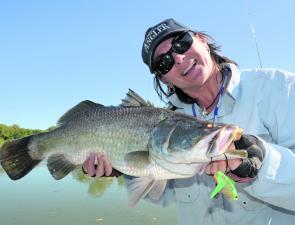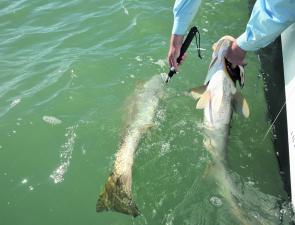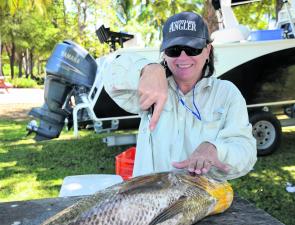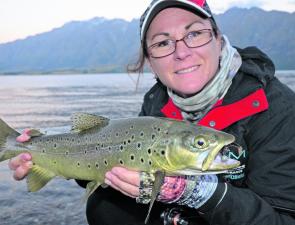Catching food for the family table is one important reason many of us go fishing. But handling the catch well is absolutely critical to the quality and nutritional value of any self-caught seafood.
Last month in this column, I looked at those vital few minutes after an intended table fish hits the deck, fish box or shore. I also explained that smart fish handling actually begins even before the catch is landed, because fish that are fought for excessive periods of time on light tackle can potentially suffer from lactic acid build-up in the flesh and muscles that could ultimately detract from their flavour. So, if you’re fishing for a feed, it always pays to use sensible tackle for the job, and to do your best to keep fight times as short as possible.
As I also explained last issue, once the fish has been landed, it’s usually best to kill the catch promptly and humanely. There are a variety of ways of doing this, including administering a sharp blow to the fish’s head, cutting the ‘throat latch’ area under the gills with a sharp knife and bending the fish’s head back sharply, or even iki spiking its brain with a special tool. All these methods work well. In the case of so-called ‘blood fish’ like tuna, tailor and trevally, it also pays to thoroughly bleed the catch.
In some instances, fish may be kept alive for considerable periods after capture, as an alternative to immediately killing and bleeding them. If you have a relatively large, re-circulating live well in your boat, it’s often possible to hold fish for hours, or even all day, before deciding what to keep and what to let go. However, be aware that in the eyes of the law, even live, healthy fish swimming in a well are ‘in your possession’, so be careful not to breach any bag and size limits, closed seasons or protected species laws by holding the wrong ones on board!
Land-based anglers sometimes choose to use a keeper net or cage of some sort to hold their catch, but many of these are too constrictive to allow free movement of fish and may end up causing stress-related deterioration of their flesh. If in doubt, kill and bleed the catch immediately.
However, be aware that within moments of the death of any fish, bacteria in its stomach and blood begin to multiply and these nasties may ultimately invade the flesh, especially around the gut cavity. This is what causes fish to go ‘off’. The speed at which this happens is largely dictated by temperature: the colder the catch is kept, the slower it will deteriorate.
In cool parts of the country (especially at this time of year), it may only be necessary to keep the catch out of direct sunlight to ensure it stays fresh for many hours after capture. However, in the tropical north, things are different.
The water from which most fish are pulled in the tropics is already very warm (typically 24-32ºC). From the moment of capture, even warmer air and hot sunlight begin to drive these temperatures up. Fish can deteriorate very fast up north, and may actually become hazardous to the health of those who consume it within a few short hours if left exposed to the elements.
In hotter climates, it really pays to pull the core temperature of the catch down fast, then attempt to keep it as low as possible until processing. Ice (and particularly a slurry of ice and seawater) is by far the best tool for this job. If you don’t have immediate access to ice, place your catch in the shade and cover it with wet, breathable material such as an old hessian bag or even a towel or sheet. By repeatedly wetting down this covering, you can use evaporation to limit the heating of the catch, as well as keeping the flies off it, but this approach is really only suitable for a few hours on hotter days. Ultimately, you’ll need ice or refrigeration to preserve the integrity of that valuable, freshly-caught seafood.
As a tip, if you’re catching a fair few fish and don’t have any ice, it may pay to release those taken early in the day and only keep a couple from quite late in the session to take home or back to camp for a meal. This way, you know they’ll be fresh.
Next month, it’s time to roll up our sleeves, grab a sharp knife and begin processing the catch.
Reads: 2477
Tropical species like barra are already quite warm when landed and then begin to heat up rapidly after capture. If they’re intended for the table, you need to drag that temperature down.

Selective harvest is a smart way to go. Here, one black jew from a double hook-up is being kept while the second in released. Having been pulled from relatively shallow water, the released fish’s chance of survival is fairly good.

Straight out of a big, ice-filled cooler and onto the cleaning table. That’s the way to do it!

A trout pulled from cold water into cool air will keep for many hours without deteriorating if simply killed and placed in the shade. Tropical anglers don’t have it quite so easy.




